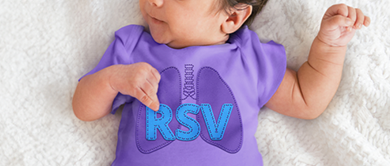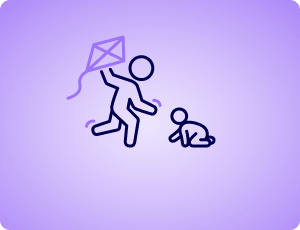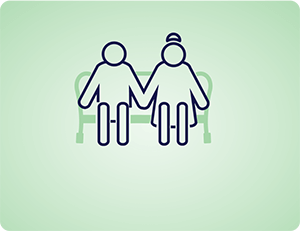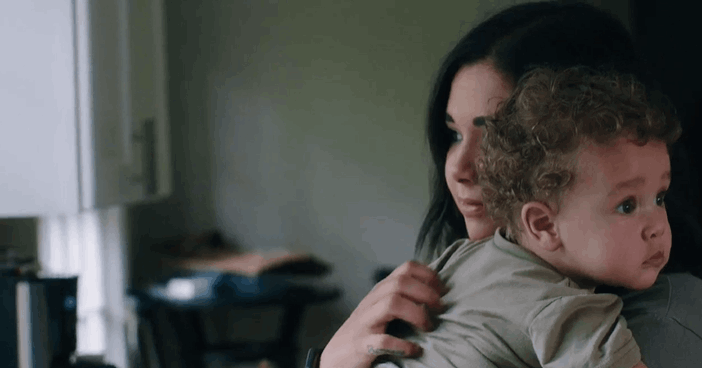

Uncover the risk of RSV in infants.
What is RSV
ABOUT RSV
RESPIRATORY SYNCYTIAL VIRUS (RSV) IS A COMMON VIRUS THAT MAY AFFECT AND COMPROMISE THE LUNGS AND BREATHING PASSAGES OF INFANTS AND OLDER ADULTS.1,2
Each year in Hong Kong, on average, 314 out of every 10,000 infants (aged 0-4 years) are hospitalized due to RSV infection.7
Some infants, children and adults are at risk of severe RSV infection.1,2
PREMATURE INFANTS AND THOSE 6 MONTHS AND YOUNGER1

CHILDREN YOUNGER THAN 2 AND WITH CHRONIC MEDICAL CONDITIONS1

OLDER ADULTS (≥ 65 YEARS OLD)2

THOSE WITH AN IMMUNODEFICIENCY1,2

THOSE WITH CERTAIN UNDERLYING CONDITIONS
Such as chronic lung disease or congenital heart disease1,2

Learn more about RSV in high-risk adults
RSV in the US
The highest rates of hospitalization for RSV in children
occur in infants less than 3 months old with the peak occurring between 1 and 2 months8,9*
* Centers for Disease Control and Prevention. RSV surveillance for infants 0-6 months
(unpublished data, 2016-2022).
Each year, RSV leads to
100-300 deaths in children ≤5 years10
UNDERSTAND THE BURDEN THAT RSV CAN BE

RSV SYMPTOMS: FROM MILD AND MODERATE TO SEVERE
EARLY SYMPTOMS
Cough, which may
progress to wheezing or difficulty breathing
RSV IN INFANTS (<6 MONTHS)
INFANTS THIS YOUNG WITH RSV ALMOST ALWAYS SHOW ONE OR MORE OF THE FOLLOWING SYMPTOMS WITH OR WITHOUT FEVER1,4:
Severe RSV
SEVERE RSV
Those infected with RSV may recover in a week or two. However, some infants may suffer more severe RSV symptoms that lead to bronchiolitis, pneumonia, and maybe even hospitalization.1,11,12
RSV IS THE LEADING CAUSE OF BRONCHIOLITIS IN INFANTS THAT MAY RESULT IN RESPIRATORY FAILURE AND MORTALITY.12,13
Acute respiratory failure
with severe bronchospasm

Moderate to severe
Hypoxia (Low levels of oxygen in one’s body tissues)

Carbon dioxide
retention
ACCORDING TO THE CDC, VIRTUALLY EVERY CHILD WILL GET RSV BY THE TIME THEY ARE 2 YEARS OLD. 1
Stop the spread of RSV
Despite the burden of RSV, RSV is mainly tackled by supportive care like drinking more fluids18, and there is no widely accessible specific prevention option, but we can still stop the spread of RSV at home and at school.1,2,15
You can:
Wellness Information
GET READY TO UNCOVER MORE ABOUT RSV. TAKE THIS QUIZ TO TEST YOUR KNOWLEDGE.
WHO CAN GET INFECTED WITH RSV?
People of all age, both healthy and with certain underlying conditions, are potentially susceptible to RSV.1,2,14
Correct!
This is true.
Correct!
*From a cross-sectional study that estimated that a mean of 6549 underlying respiratory deaths were associated with RSV annually, including 96 deaths among children <1 year. There were 10,171 underlying respiratory deaths associated with influenza annually, including 23 deaths among children <1 year. Statistical analysis was performed for 1043 weeks, from Jan 3 1999 to Dec 29 2018.15
Sorry!
This is actually true.
*From a cross-sectional study that estimated that a mean of 6549 underlying respiratory deaths were associated with RSV annually, including 96 deaths among children <1 year. There were 10,171 underlying respiratory deaths associated with influenza annually, including 23 deaths among children <1 year. Statistical analysis was performed for 1043 weeks, from Jan 3 1999 to Dec 29 2018.15
Infants are at increased risk of RSV infection as their antibody responses are blunted and have easily inflamed and congested respiratory tracts.16,17
In infants, RSV has caused approximately16:
- 40%-90% of bronchiolitis-related hospitalizations
- Up to 50% of pneumonia-related hospitalizations
Which of the following statements on infant RSV infection in Hong Kong are correct?
- Each year in Hong Kong, on average, 314 out of every 10,000 infants (aged 0-4 years) are hospitalized due to RSV infection.7
- Approximately 37% of infants (aged 0-4 years) hospitalised due to respiratory illness had an RSV infection.7
- All of the above.
Correct!
Both Answers are true.
That is incorrect.
Both Answers are true.
WHAT IS RSV?
RSV, or respiratory syncytial virus, is a highly contagious virus. While most people experience mild symptoms that resolve on their own. RSV-associated acute respiratory infection can in some cases cause severe respiratory symptoms.2,3,6
RSV CAN BE EASILY MISTAKEN FOR INFLUENZA3
Like influenza, RSV is an RNA virus that is spread through close contact with infected individuals or contact with a contaminated surface. RSV incidence also tends to overlap with influenza season, typically occurring between late fall and early spring in the US.1,4
LEARN MORE ABOUT HOW RSV AFFECTS INFANTS AND CHILDREN.
RSV affects not only infants.
For more information on infant RSV infection, please visit the Centre of Health Protection website. Visit chp.gov.